| 1 | Wilson’s montane pitviper |
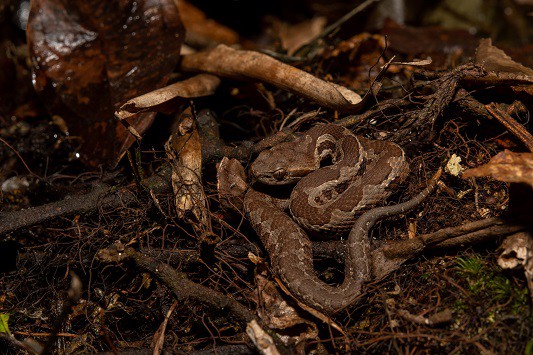
One of the last snakes in El Salvador you’d want to meet, unless you specifically like searching for dangerous creatures. This venomous snake measures up to 78.9cm, and has a pale white mouth lining, almost like a cottonmouth’s, which they bare at people when trying to terrify them (sometimes succeeding).
Cerrophidion wilsoni is a high altitude viper, inhabiting various forest types: lower montane dry forest, high montane forest, cloud forest, pine-oak forest. They’re relatively flexible, and can easily slither across deforested or naturally open areas close by. This viper rarely climbs trees, and has a haemotoxic venom which is specialised against mammals. The exact deadliness of its venom in humans is a mystery, as no detailed studies have been conducted.
Wilson’s montane pitviper can reach altitudes of 3491 metres, rarely appearing below 1400 metres. One of their confirmed prey is the giant whiptail lizard (Aspidoscelis motaguae). So far, they’re confined to Honduras, El Salvador, and western Nicaragua, but the highlands of western Honduras also cross into eastern Guatemala, and scientists believe that it’s only a matter of time until they’re found there as well.
Cerrophidion wilsoni is closely related to the Costa Rica montane pitviper (Cerrophidion sasai), and is estimated to have diverged 3.1 to 6 million years ago. Somehow, this ancient split went unnoticed until 2012, when genetics finally proved it.
| 2 | Mexican cantil |
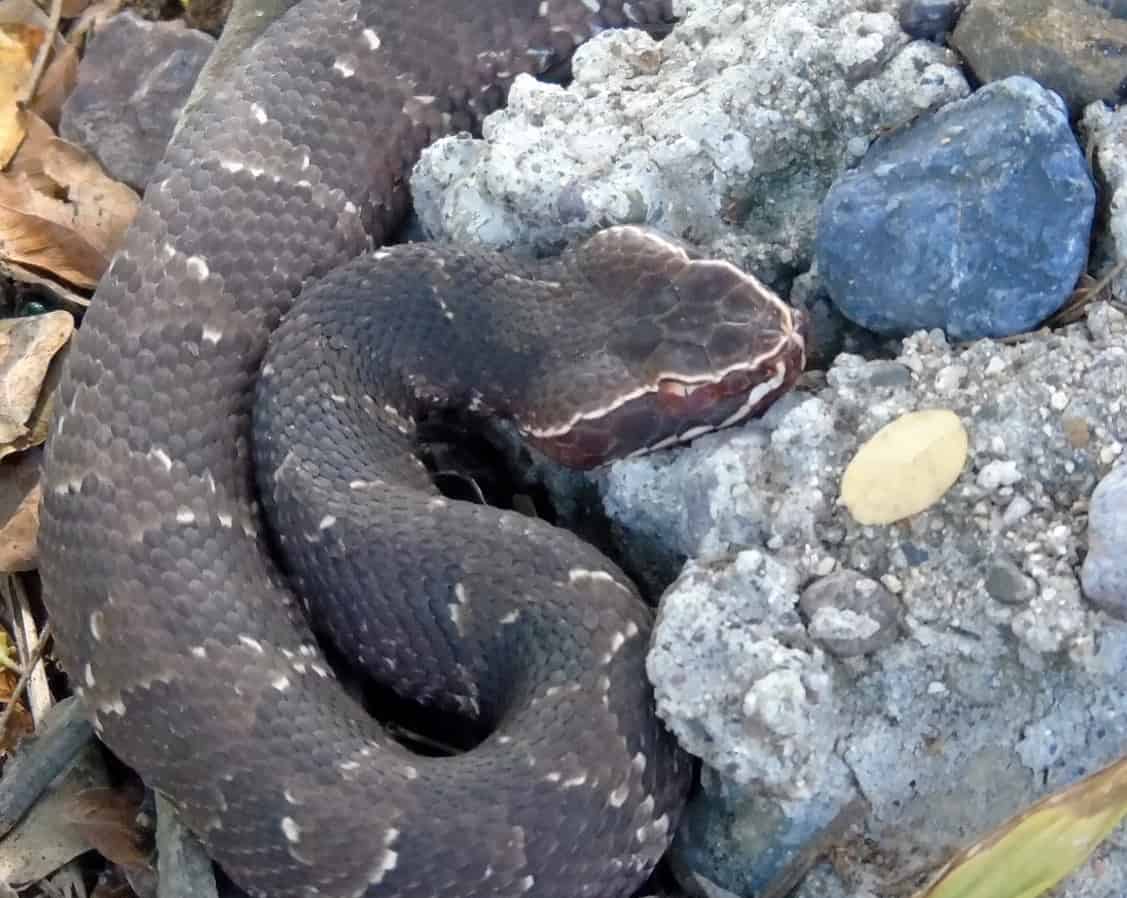
The copperhead and cottonmouth might have their hands full terrifying Americans today, but millions of years ago, a group travelled southwards and transformed into a far blacker version, with thin white stripes. This is the Mexican cantil (Agkistrodon bilineatus), which belongs to the same family. This version is just as muscular and bulky as the copperhead, and averages at 60-80cm, with an all-time record of 138cm.
Mexican cantils are found in drier thorn and deciduous forests, rather than thick rainforests. Like the cottonmouth, legends speak of a vicious, murderous personality, but this isn’t proven. What is proven is that their venom is significantly more potent than their US cousins. Mexican cantils have almost no neurotoxic powers, but cause massive damage to skin tissue, destroying so much flesh that white bone is exposed and victims require amputation. A 1983 study even mentioned “spontaneous amputation”, damage so severe that body parts automatically dropped off.
The Mexican cantil empire begins in central Mexico, spreading through Guatemala, El Salvador, and reaching Nicaragua before fizzling out. In Costa Rica, they’re replaced with Gloyd’s moccassin (Agkistrodon howardgloydi), the southernmost member of the group. Their diet mainly consists of mammals.
| 3 | Neotropical whipsnake |
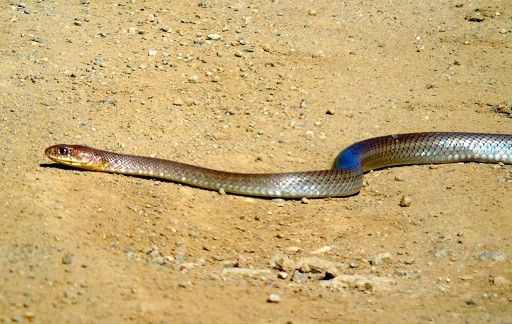
One of the longest snakes of El Salvador, reaching 252cm in the most gigantic individuals. This is a widespread species which occurs from Mexico to eastern Panama.
The neotropical whipsnake (Masticophis mentovarius) is a lowland species, which dislikes dense jungles. They stick to open areas such as savannahs or thickets, near areas of dry forests or premontane moist forests. Rather than foggy mountains, they stick to elevations of 0-450 metres, occasionally reaching as high as 1000m.
Masticophis mentovarius is mostly a ground-dwelling snake, and a fast moving one at that. Their diet includes lizards such as silky anoles, and fellow snakes such as road guarders (Conophis lineatus). Rather than instantly injecting venom, the neotropical whipsnake chews the head of its prey for several minutes, allowing a mild venom to gradually soak in. Once their victim stops struggling, they commence swallowing, which can take 15 minutes for fellow snakes.
Neotropical whipsnakes tend not to react to human presence, even if in the middle of eating. They range from grey to light brown in colour, overlaid with faint black lines, while their pupils are round with a bronze iris.
| 4 | Small-spotted cat-eyed snake |
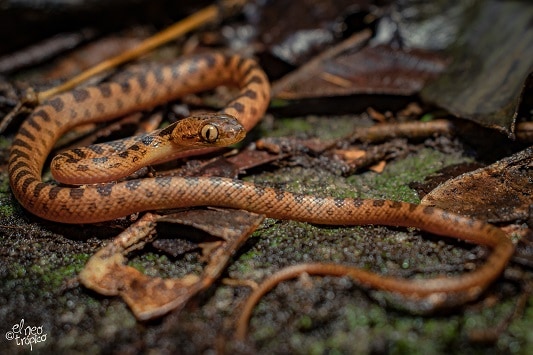
A mildly venomous, semi-tree snake which reaches a maximum of 100cm. This snake was originally a subspecies of the northern cat-eyed snake, but was broken off into its own species: Leptodeira polysticta, AKA the small-spotted cat-eyed snake.
This species ranges from southern Mexico through to Honduras, and inhabits multiple forest types, including lowland rainforests, pine-oak forests and evergreen forests. The speciality of this snake is being the number one nemesis of El Salvador’s local frogs. The likes of common Mexican tree frogs will start making panicking distress calls to alert their fellows, and inflate their body as a defensive measure whenever Leptodeira polysticta draws near. Their list of confirmed frog prey is huge: Stauffer’s tree frogs, Morelet’s tree frogs, yellow tree frogs, Mexican tree frogs, etc. They also eat snakes such as the red coffee snake (Ninia sebae).
Small-spotted cat-eyed snakes reach elevations of 2200 metres, and sometimes appear in roofs of rural houses along dirt roads. They vary from light grey to orange, and rather than several huge blotches like a boa constrictor, they have a splattering of much smaller blotches. They have strongly vertical pupils, and the colour of their eyes always matches their body: grey or orange.
| 5 | Forest flame snake |
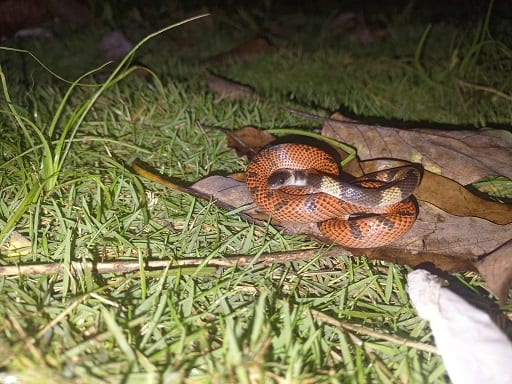
A harmless snake which is found across central America, and the vast majority of Brazil. Forest flame snakes (Oxyrhopus petolarius) measure 80-100cm, with a maximum of 132.7cm. They’re particularly excellent at skirting across thin branches, and appear in rainforests, cloud forests, gallery forests along riverbanks, and logging roads between forests. As adults, they have red and black bands, but as juveniles, the red areas can be white instead.
The Latin name explains all you need to know about this snake. Oxyrhopus contains the Greek words oxy for “quick”, and rhops for “bush”, likely for its tendency to flee rapidly into the undergrowth when spooked. Petolarius references the Japanese deity petola, who wore a pretty, colourful cloak, and hid in remote, inaccessible parts of the forest when persecuted.
Forest flame snakes are mildly venomous, but this venom has little effect in humans, as it is specially attuned towards cold-blooded reptiles. Dinner items include forest whiptails (Kentropyx pelviceps), yellow-tongued anoles and slender prionodactylus, and birds such blue-black grassquits. Forest flame snakes are smart enough to vary their hunting methods by prey size. They swallow smaller lizards whole without thinking, but with larger reptiles, they’ll be cautious and chew in a mild venom.
| 6 | Mexican parrot snake |
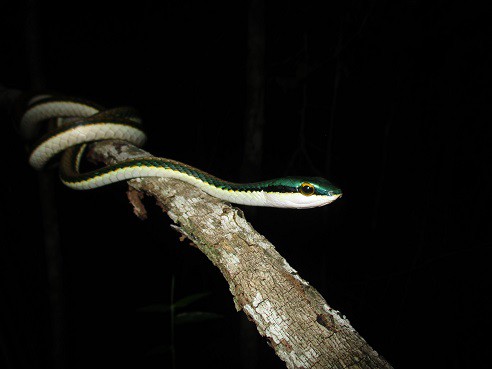
Another snake with a mild venom, which is nevertheless incapable of killing a human. The Mexican parrot snake (Leptophis mexicanus) reaches a maximum length of 140cm, and stretches from eastern Mexico to northwest Costa Rica. They’re another excellent tree climber, which use their light weight to skirt along fragile branches with ease.
Mexican parrot snakes normally stick to mid-height vegetation rather than towering treetops. Forests are optimal, but they also inhabit smaller clumps of trees next to villages or scientific research stations.
Leptophis mexicanus is closely related to the giant parrot snake (Leptophis ahaetulla), and shares their bulging bronze eyes. However, Mexican parrot snakes can be separated by one easy ID feature: a large bronze stripe down their back. Their bodies have less green overall than giant parrot snakes, their bellies are a cleaner white colour (no green leaking in), and they have a stronger black stripe running through their eye.
Mexican parrot snakes feast on tree frogs, and reptiles such as Utila spiny-tailed iguanas and bighead anoles. They forage actively, watching branches keenly for the slight flicker of movement that reveals a lizard attempting to disguise itself. They’re even capable of grabbing lizards concealed in dark hollows between tree roots.
| 7 | Rhombic cat-eyed snake |
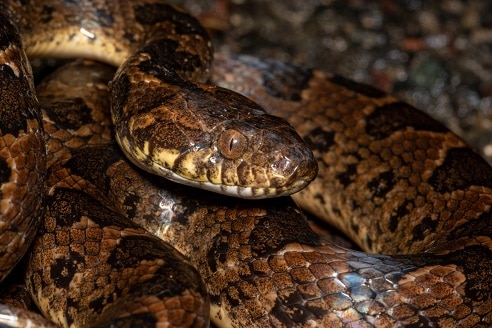
This species lives in 6 out of 7 central American countries, the exception being Belize. The rhombic cat-eyed snake (Leptodeira rhombifera) typically measures 65cm, and is found in woodlands, dry forests and moist forests alike. They’re a semi-arboreal species, moving between the trees and ground, and their venom is no serious threat to humans.
Like other Leptodeira members, the rhombic cat-eyed snake is a heavy anuran (frogs and toads) specialist. When frogs gather together en masse during breeding season, this is a dream come true for them. Their greed is so strong that they can swallow 30-40 frogs in a single evening, occasionally feasting on their eggs. They also eat catfish, which they seize on the banks of small forest streams, and drag them to dry land to swallow. Leptodeira rhombifera patiently locates the head, before swallowing whole.
Leptodeira rhombifera varies in appearance. Some have sharply alternating black and fiery orange bands, while others have a mildly orange base overlaid with dark brown blotches. The dark blotches can also fuse to form zigzags. As a hatchling, this El Salvador snake has a white neck collar, but this fades with age.
This is a short-lived snake (like other Leptodeira members), which rarely exceeds 10 years old even in captivity. One captive snake developed cataracts with age, making its lunges for frogs clumsy and inaccurate.
| 8 | Central American tree snake |
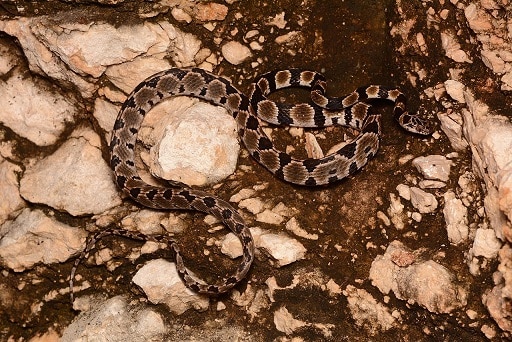
A lesser known relative of the blunt-headed tree snake. The central America tree snake (Imantodes gemmistratus) resides from central Mexico to northwest Colombia, with El Salvador lying roughly in the centre. They reach a maximum of 93cm, and like their cousin, they not only live on extremely delicate tree branches, but hunt on them. This snake has an extremely large head, bulging eyes, and a neck barely thicker than a garden twig.
Central American tree snakes are mildly venomous constrictors, which would be safe to pick up if only you could catch them. Their diet consists of Anolis lizards, and after identifying the reptile waiting silently on a branch, their strategy is to extend their thin body over the gaps between, balanced precariously, and seize them suddenly with their jaws. If a Burmese python tried this move, the entire tree would probably snap.
Both Imantodes tree snake members are found in El Salvador. They can be tricky to distinguish, but Central American tree snakes have a higher number of bands, which are also thinner in width. They stray to more open areas, and prefer drier, deciduous forests on Pacific slopes. Blunt-headed tree snakes are found mainly in lowland rainforests, and the wettest, densest, and stickiest ones to boot.
| 9 | Boa imperator |
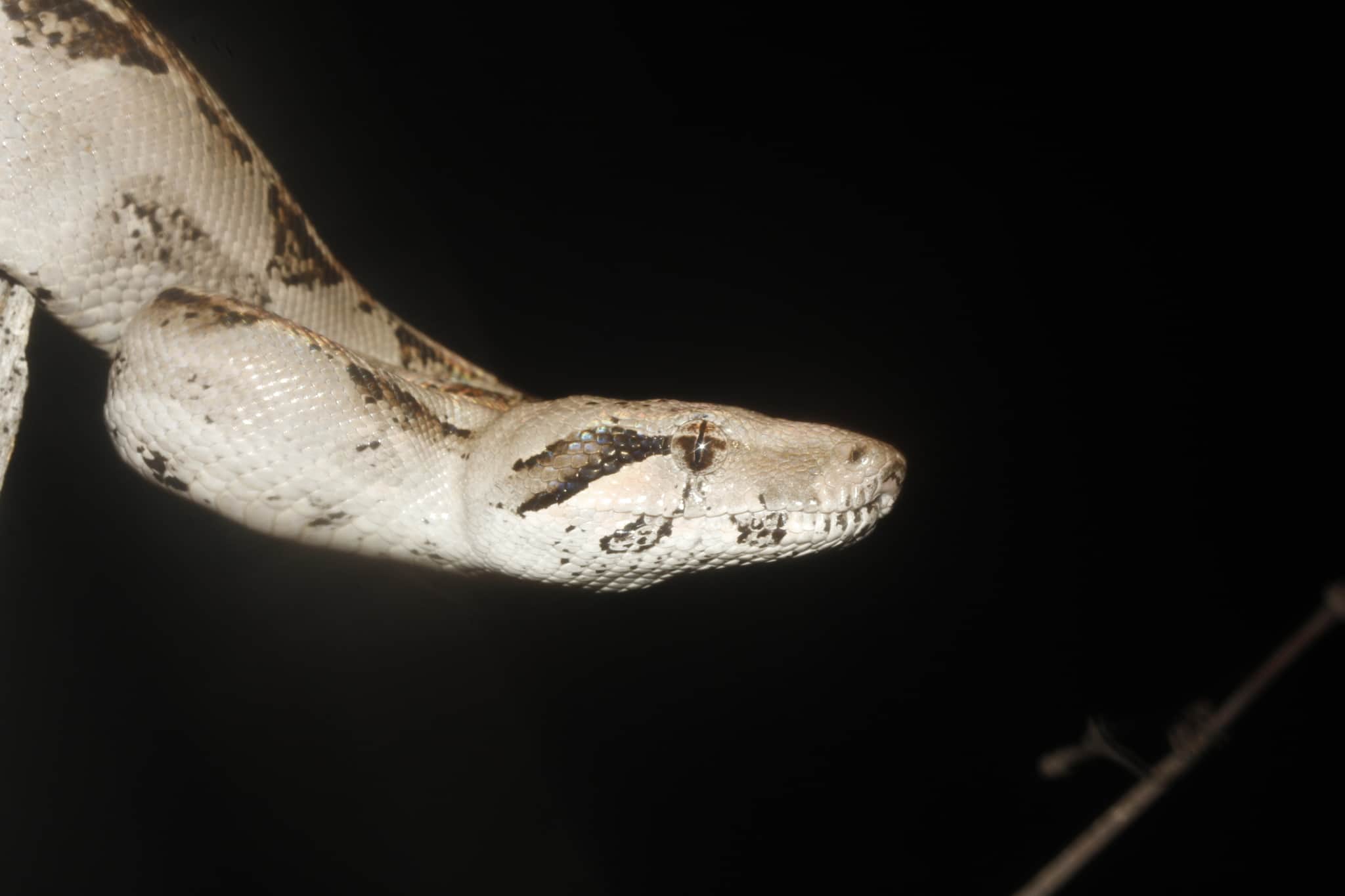
Boa imperator is officially El Salvador’s longest snake, reaching 3.7 metres. It was only “discovered” in 2016, yet is one of the best researched snakes in the world. This is because it was originally a subspecies of the boa constrictor, until DNA analysis proved it to be a full species after all, with a genetic divergence of 5-7%. From then on, all boa constrictors found in Central America were officially switched to Boa imperator.
This version is lighter overall, but with a darker tail. The messy blotches are similar, and they’re just as long-lived as their cousin, reaching 40 years in captivity. Boa imperators share the constricting nature, and the ability to live in endless habitats, such as forests, grasslands, villages, and savannahs.
Boa imperator replaces its cousin in Columbia and Ecuador west of the Andes, before inhabiting all 7 countries of central America, and finally finishing in southern Mexico. Meanwhile, everything in South America east of the Andes is still classed as the boa constrictor, including in the entirety of Brazil.
When the species were split, all food records for Central America were transferred to Boa imperator. Consequently, the amount of confirmed prey for this snake is already gigantic. Mammals are favourite, with hefty helpings of frogs and birds. The list continues to grow, such as in 2022, when a boa imperator was recorded eating a Yucatan squirrel. Other prey include porcupines, monkeys and even small deer.
| 10 | Tiger ratsnake |
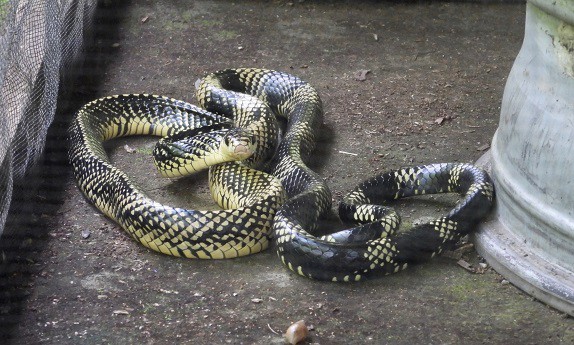
A harmless yet extremely long snake, which reaches 2.7 metres, and climbs thin tree branches with ease. Tiger ratsnakes are extremely easy to recognise. Their body features just two vividly contrasting colours: creamy yellow and night-time black. The yellow comes in vague stripes, but there’s also yellow scales dotted around as if by random.
Tiger ratsnakes (Spilotes pullatus) are one of the most successful snakes in the world, with a vast range stretching from Mexico to the heart of South America. They’re a strongly muscled snake, which can poke their upper bodies leagues beyond the branch supporting them, as though floating in thin air. Branches are easily their main hangout, 2nd is by a thick tree trunk preparing to climb, while their 3rd main hangout is in the roofs of village houses searching for bats.
Tiger ratsnakes are relatively uncommon in dense rainforests. They prefer forested areas interspersed with clearings, which commonly brings them into contact with people. Tiger ratsnakes have an unfussy diet, focussing on mammals, but also reptiles, birds, and bird eggs. They may be slightly too unfussy, as one tiger ratsnake was spotted swallowing an adult Mexican tree porcupine, before dying when its spines pierced its body.
